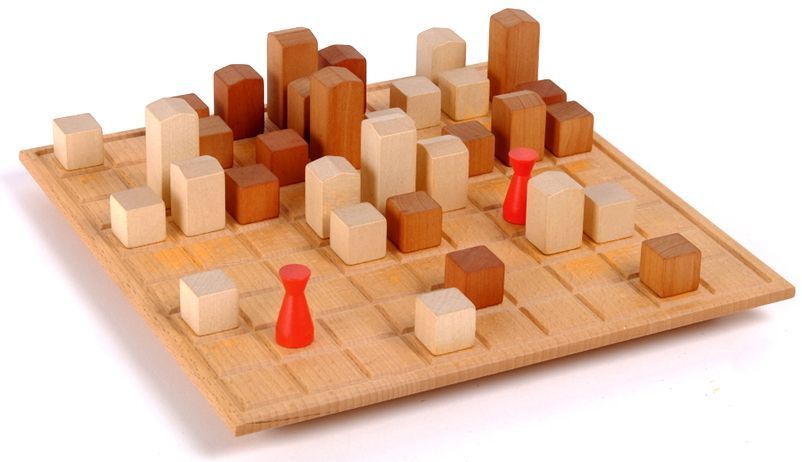Urbino (2017) Board Game
Urbino is an abstract strategy board game released in 2017 by designer Ludwig Gerhards. The game is set in the Italian Renaissance city of Urbino, known for its beautiful architecture and cultural significance. Players take on the role of master builders competing to construct the most impressive buildings and gain influence in the city.
Game Components of Urbino
How To Setup Urbino
To set up Urbino, each player places one of the red architect tokens on the board. These architects are not owned by any player and can be moved by either player during their turn. The game starts with these initial placements, and players then begin their turns by moving an architect and building structures within the intersecting lines of sight of both architects.
Gameplay Mechanics and Game Objective
Player Experience
Urbino is praised for its depth and complexity despite its simple initial appearance. Players need to balance offensive and defensive strategies, continually adjusting their moves to block their opponent’s attempts while securing valuable building spaces. The game requires careful planning and attention to the Architects’ positions, making each session challenging and engaging. Over multiple plays, players can develop more sophisticated strategies, making the game rewarding and enjoyable.
Pros
Cons
Personal Thoughts on Urbino
Urbino is ideal for fans of abstract and strategy games who appreciate games with deep tactical and strategic elements. It is a great choice for players who enjoy planning and executing complex moves, and it is particularly suited for those who value the aesthetic appeal of high-quality game components. While it may not be the best fit for casual gamers or those looking for a quick, light-hearted experience, Urbino offers a rich and rewarding gameplay experience for those willing to invest the time to learn and master it.
We are supported by our audience. When you purchase through links on our site, we may earn an affiliate commission, at no extra cost for you. Learn more.

